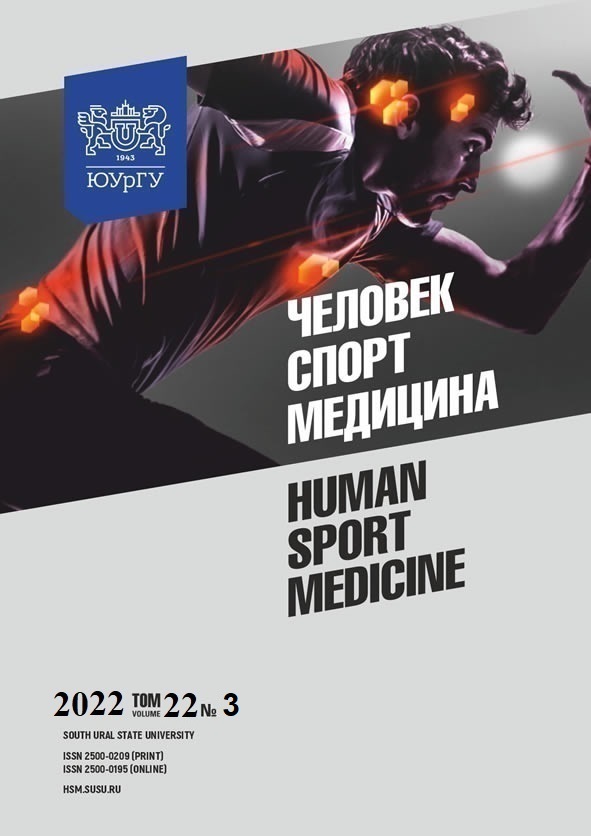POSTURAL IMBALANCE IS ACCOMPANIED BY CHANGES IN CARDIAC RHYTHM AND CONDUCTION IN YOUNG ATHLETES
Abstract
Aim. The aim of the study was to identify the correlation between postural balance and changes in cardiac rhythm and conduction in athletes ages 16–18. Materials and methods. The study involved 266 male athletes (training experience – 6–10 years, representatives of 5 sports, namely athletics, swimming, speed skating, cross-country skiing, wrestling) in the recovery period. For each subject a 12-lead ECG recording was obtained (rest, PWC170 test, 5-minute recovery) and force platform data (2 tests with open and closed eyes) were collected. Results. It was found that 50.38% of athletes have changes in rhythm and conduction, namely incomplete right bundle branch block (IRBBB), extrasystole, early repolarization (ER), sinoatrial (SA) block (1st degree) and pacemaker migration. After examination all athletes were divided into 2 groups: 1 – no ECG changes (n = 132); 0 – ECG changes (n = 134). It was found that analyzing ECG data without dividing by sport did not allow us to establish differences in postural balance, which was associated with a high variability of the maximum and minimum individual values. Conclusion. The subsequent analysis of force platform data was performed based on sports disciplines, and it showed significant differences between the groups of athletes. The data obtained confirm the correlation between postural balance and ECG. These differences were determined by specific patterns of motor actions, which activated compensatory mechanisms resulting in the development of rhythm and conduction disturbances.
References
References on translit
Copyright (c) 2022 Human. Sport. Medicine

This work is licensed under a Creative Commons Attribution-NonCommercial-NoDerivatives 4.0 International License.















